- Administrator
- Albums and Singles
 In their third release on Thrill Jockey in barely a year, the fraternal trio continue their trek into Appalachia-damaged stoner rock that proudly wears its influences on its sleeve, yet takes their backwoods classic Sabbath through Earth sound into a realm all their own.
In their third release on Thrill Jockey in barely a year, the fraternal trio continue their trek into Appalachia-damaged stoner rock that proudly wears its influences on its sleeve, yet takes their backwoods classic Sabbath through Earth sound into a realm all their own.
Across this album there are many of the expected reference points: early Sabbath sludge dirges, a hint of 1990s grunge rock, and a bit of contemporary metal here and there. But, just as it seems like a track settles into something conventional, an oddity will pop out that changes everything entirely. Even early on, on the opening "Laywayed," there is a grunge-influenced alternative plodding, not quite becoming overly murky, but definitely heading that way. Then the mix simply gets cut up seemingly at random, destroying the rhythm that had been fostered.
Some of the shorter tracks lean even more on the unlikely: "Headless Conference" picks up the rhythmic pace to an almost manic jazz one, compared to the lugubrious tracks before. Even more departing, "Heat Pleasure" has the guitar riffs fast enough to create that dull roar that early grindcore bands established themselves with.
More often though, the tracks stay somewhat wrangled in. Both "Wild Knife Night Fight" and "Honey" throw dual vocal harmonies over overdriven bass into more conventional "rock" territory, though the latter especially contrasts the twangy mountain folk sound with grimier sludge aspects, sounding like a more fleshed-out Earth from the modern era jamming with the heroin loving incarnation from some 15 years ago.
Other tracks play up the folk elements more: "Aestival" and "Seminal Shining" have a lazy, yet sinister quality to them that perfectly fits an early fall visit to rural Virginia. The twisted, schizophrenic folk arrangements are somewhat reminiscent of some of the best Angels of Light albums, but never sounds like a direct copy.
With all of this variety and experimentation, it’s refreshing to hear tracks like "Blood Pride" and "Aasstteerr" unabashedly break out the loping blues metal guitar riffs that sound like Ozzy era Sabbath in the best possible way, with just a little bit of twang: the latter bursting out from a noisy chaotic introduction. The disc’s title track pretty much encapsulates the entire album’s ethos into a single 13 minute track, getting in bass heavy sludge, dissonant guitar noise, jazzy improvisation, and pure stoner rock all together in a way that makes sense.
For a young band, Pontiak definitely has their proverbial shit together when it comes to sound and style. In the individual pieces, it might not be something that is breaking new ground or pushing the boundaries, but put together it is a catchy set of normally disparate styles that work well together here.
samples:
Read More
- Administrator
- Albums and Singles
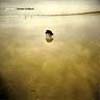 I don't know if music has ever been prescribed for people suffering from the vagaries of Attention Deficit Hyperactive Disorder. Perhaps it is yet to be. I don't know if this album, the debut full length release from the Austrian duo of Roman Gerold and Richard Eigner, would help with the attention aspect of the disorder (its lush textures allow the mind to drift along lazily). I am positive though, that its soothing sounds can certainly calm the frantic, hyper-driven tendencies of the modern mind.
I don't know if music has ever been prescribed for people suffering from the vagaries of Attention Deficit Hyperactive Disorder. Perhaps it is yet to be. I don't know if this album, the debut full length release from the Austrian duo of Roman Gerold and Richard Eigner, would help with the attention aspect of the disorder (its lush textures allow the mind to drift along lazily). I am positive though, that its soothing sounds can certainly calm the frantic, hyper-driven tendencies of the modern mind.
Refracting the lounge and exotica of yesteryear through a lens of glitched electronics, Golden Solitude is as warm as an afterglow, with its unpretentious blips of pop and mellow hints of sultry jazz. An element of entrainment is at work on this record, as song by song, it seems to gradually slow down. Synced up with it, I slowed down as well. The first two songs, parts one and two of the title cut feature saxophone played in a style vaguely reminiscent of Kenny G. Normally this would be enough to turn any self respecting music lover off, but here, mixed with resonant vibraphones, pastel electronic washes, and the oceanic wave of a softly crashed cymbal, it works well, announcing the smoothness of production to be found on the rest of the songs.
In “A Fancy Friendship” the pop sensibilities and studio wizardry of the duo are exemplified. Emotive female vocals purr without lyrics over the top of a silken bass line. Dubby echoes drip off the tight percussion hits as bits and pieces of electric debris ripple through the speakers and disappear before they’ve had the time to be announced. “Disappearing City” is a more meditative affair. Ushered in by what sounds like a slurry of desiccated keyboards it quickly gives in to the dynamic interplay between bass and drums found throughout the album, a recurring element that make these songs so engaging. More experimental moments are heard on a song like “Concrete Leaves” which could be a study in Just Intonation: a brass horn hovers over extended notes, layered it plays against itself, going up and down in small increments, yet cyclically returning to a key note. This song also represents the nadir point of the album. It isn’t the last song, but is the slowest, and without percussion, bass, and the strong hooks of the previous pieces, it left me feeling like I was floating in a dissonant void of naked sound.
At the end “Golden Solitude” is reprised and remixed as a click and cut fest of flanged beats, microscopic splices, and tones that waver like a theremin. The sax is left out of the proceedings. The piano, briefly heard on the first version, is somehow given more space to breathe amidst the dense collage of audio snippets. Upbeat compared to the rest of the disc, it imparted a buoyant, relaxed feeling. With the resurgence of interest in the various forms easy listening music, this album takes a step towards a contemporary acoustic and electronic interpretation of those styles.
samples:
Read More
- Administrator
- Albums and Singles
 Fluxus artist Yoshi Wada has had a bit of a resurgence in the public eye lately due to a number of recent reissues of works that, in retrospect, fit alongside many of the best and most challenging minimalist works of the last forty years. Here, EM presents the fourth and final Wada release in their series with the world premiere of a 1974 performance in Syracuse, New York consisting of a single drone and four Wada-created "pipehorns" tuned to the frequencies of the room itself.
Fluxus artist Yoshi Wada has had a bit of a resurgence in the public eye lately due to a number of recent reissues of works that, in retrospect, fit alongside many of the best and most challenging minimalist works of the last forty years. Here, EM presents the fourth and final Wada release in their series with the world premiere of a 1974 performance in Syracuse, New York consisting of a single drone and four Wada-created "pipehorns" tuned to the frequencies of the room itself.
What results is a 162-minute drone work (cut to 77-minutes for the CD version) of near stagnant enormity. Beginning from the drone, an oscillation that takes acoustic information from the room and recycles it back out, each horn enters one by one only to spend the next two-plus hours monolithically exploring the overtone structures of the room in a kind of quartet meditation on sound.
Works like this are, to be fair, not for everybody. This is truly directionless, and the musical change which takes place from beginning to end is near zilch. As with anything this unmoving then, the important question is whether or not the journey from beginning to end achieves its intended effect and whether that effect is worth one's time. The answer to both of these in this case is an enthusiastic yes.
Each horn note's bellow or drone gradually builds the whole into an intoxicating blend of overtones no less effecting than those used in La Monte Young's Well-Tuned Piano. It is always a pleasure to hear sound and space used in such unity, as it creates a dialogue not so much between the musicians and their instruments but between them and the sound itself. As the room bends and shapes the slight variations in sound it creates an effect far beyond the actual notes played, and it is to this effect that the horn players (Jim Burton, Garrett List, Barbara Stewart and Wada) contribute when playing their notes.
Thus the work is one whose strength comes from its size, as it is only with complete immersion that the piece comes to hold any its potentially meditative intricacy. This is a minimalism far removed from Reich and Glass's restructuring of classicist forms and is far nearer to the ritual spirit of Angus MacLise, the stark and simple structures of Alvin Lucier and the tonal attunement of Pandit Pran Nath. Often such works are touted as lost classics, but it is rare that it is actually the case. In this situation however, its value is as clear as can be.
samples:
Read More
- Administrator
- Albums and Singles
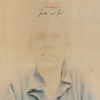 Hans-Joachim Roedelius' stature in German experimental music is well documented in his work with Cluster, Harmonia and Brian Eno. Yet Roedelius' solo output often drifts sadly under the radar. Here Roedelius' 1979 solo effort, his second, is reissued so that once again his distinctive musical style can be seen unblemished by a surrounding group. With this freedom, Roedelius used his simple compositional approach to achieve one of his most whimsical and curious statements.
Hans-Joachim Roedelius' stature in German experimental music is well documented in his work with Cluster, Harmonia and Brian Eno. Yet Roedelius' solo output often drifts sadly under the radar. Here Roedelius' 1979 solo effort, his second, is reissued so that once again his distinctive musical style can be seen unblemished by a surrounding group. With this freedom, Roedelius used his simple compositional approach to achieve one of his most whimsical and curious statements.
Perhaps most surprising about the work is its predilection for distinctly classicist motifs and styles. Despite their unusual instrumentation (often combining rich grand piano chords with synthesized melodies atop), most of these works feel like small classical samplings from a bygone era. The synthesized horn lines of the opening "Fou Fou," the gently descending melody of "Toujours," each work gracefully skims along with an almost Kurt Weillian sense of a line, only as filtered by the simplicity and cultivated aesthetic of Erik Satie.
Of course any nostalgic feeling achieved by the album is an eccentric distortion of the classical fare that it conjures. Yet this is a testament to the artist's talent as a composer and arranger, and works such as the waltzing "Rue Fortune" don't so much rehash the past and resituate it. There is a nearly circus-like dementia to the piece as a four-chord rhythm is repeated above increasingly swirling background synthesizers. The effect is subtly disorienting, never taking over the work so much is deepening its potency.
The same could be said of "Cafe Central," whose synth lines loop atop one another below a synthesizer melodic line and pulse. Given the general lack of rhythm machines or sequencers here, Roedelius makes the most of what he has, always carefully choosing each sound and effect and never getting too overindulgent with them. This gives "Cafe Central" a highly Eno feel, and could easily fit in as one of the beautifully soft-spoken miniatures within Another Green World.
Over and over again what displays itself most clearly here is Roedelius' ability to take a small melody or idea and expand upon it until it becomes a work in itself. This doesn't mean layering endlessly however; sometimes, as on "Le Jardin," all he needs is a melody, a buzz, a synth line and some birdcalls to create an evocative piece whose reach is refreshingly short. Each melody here speaks for itself and each work is as playful as the next, as exhibited by the Kraftwerk circa Autobahn momentum of "Etoiles," with its lilting synthesizer rhythms, cooing female vocal and drifting cello line. It is a cohesive whole far that achieves a whole far greater than its cutesy melodic fragments may imply.
Included in the reissue are six bonus cuts, three of which are remixes and three newer tracks. The remixes are different enough from the originals to keep them interesting, and the new tracks fit snuggly in, rounding out an already impressive and understated work. While so many of these kinds of albums have come to sound dated, Roedelius' clean and crisp sound retains the freshness of his material, even as electronic music moves ever further from the approaches and sounds he most adheres to.
samples:
Read More
- Administrator
- Albums and Singles
 Sacros won the 1968 Chilean schools contest for "beat" groups. Five years later they recorded their only record: this Latin American country rock hymn cycle inspired in part by ancient Mayan and Andean Gods. Released September 18, 1973, seven days after a military coup installed the dictator General Augusto Pinochet, most copies were destroyed in the subsequent crackdown.
Sacros won the 1968 Chilean schools contest for "beat" groups. Five years later they recorded their only record: this Latin American country rock hymn cycle inspired in part by ancient Mayan and Andean Gods. Released September 18, 1973, seven days after a military coup installed the dictator General Augusto Pinochet, most copies were destroyed in the subsequent crackdown.
40 years ago, Sacros looked set for success, at least in their native land. They had won the national schools competition in their "carefully chosen look, dressing in black trousers with white lace shirts" and at the time of recording their debut (after numerous changes of personnel) they were a well-honed trio, having practised at the Divina Providence Church in exchange for "making an electric mass". Tomas Herrera was drumming, and Hernan Valdovinas was on bass sharing vocals with Patricio Panussis, one of the first 12-string guitarists in Chile.
This self-titled disc is a lovely cross-pollination. On one hand Sacros were friends with many priests and exposed to religious music; hence their name, "Sacred," on the other, they were hearing US electric folk influences such as The Byrds. Ironically, other US influences were at work in Chile, too. At the behest of Nixon and Kissinger, the CIA
were busy training the Chilean miltary, and funding anti-government strikes. Kissinger stated that "the issues are much too important for the Chilean voters to be left to decide for themselves" and "I don't see why we need to stand by and watch a country go Communist due to the irresponsibility of its people." On September 11, 1973, the Chilean airforce bombed Santiago using British-made planes, and decades of murder, torture and other human rights abuses were set in motion. On the day of the coup, Salvador Allende took his own life. Poet and singer Victor Jara was held with thousands of others in the Chile Stadium where he was repeatedly beaten before being machine gunned. Before his death, Jara wrote a poem about the conditions in the stadium which was smuggled out in the shoe of a friend. And let me take this opportunity to point you to Robert Wyatt's version of Jara's "Te Recuerdo Amanda" ("I remember Amanda"). An estimated 200,000 people left Chile for exile. Two members of Sacros fled to Spain. Herrera quit music. Valdavinos became a renowned painter and only returned to his homeland post-Pinochet to play music again with his old friend Panussis. The latter had remained in Chile and subsequently formed the band Miel and also Musica Universal (unfortunately, a "new age" act). Henry Kissinger won the 1973 Nobel Peace prize.
So, for very good reason, then, this is an ultra-rare album. I listened to it with bated breath, as the early 1970s combination of spiritual and country rock styles might have come out sounding as dodgy as Spinal Tap meets the Gypsy Kings. Yet, with light production, restrained playing and gentle experimentation, Sacros has an integrity which modern attempts to create the analog sound can't match, and it always steers clear of the worst turgid excesses of the psychedlic rock era. The short opening piece "Aum" welcomes us to Chile in muted fashion, reverential voices to the fore. After that, in innocent contrast to the political events which would unfold, it is consistently breezy. As a non-Spanish speaker, I find the lyrics pleasantly mysterious but for all I know it's trite nonsense. No matter, this is a record I'll be enjoying for a while. Patricio Panussis's guitar playing at the start of "Iluso Que Suenos" has a hypnotic propulsive quality predicting Johnny Marr by about 25 years. A psychedelic ode to the Plumed Serpent "Quetzalcoatl," God of the Mayas, is also a highlight, but the truly transcendental track is "La Realidad" ("The Reality"). This piece is a perfect crescenso of infectious vocal melodies, thumping bass, and jangling guitar; from one West Coast to another. Chile Stadium is now named Estadio Victor Jara and (in musical terms) Sacros is a worthy reissue. Some spirits cannot be "disappeared."
samples:
Read More
- Matthew Spencer
- Albums and Singles
Two sidelong tracks of low-tech miasma make up this cassette EP. While the individual sound elements are varied and potent, as a whole the compositions tend to drag in the middle. I'm sure that Millions didn't set out to be an example, but The Unanimous Night is typical of what happens when music gear is relied upon to generate mood music.
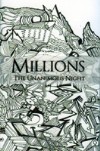
Call it speculation, but I'm pretty sure that Millions used Boss Loop Station RC-20XL to build most of this album. Developed for live sampling, this guitar pedal's ability to infinitely layer sounds makes it the tool of choice for the dronist. About as common as cows in Wisconsin, their strengths and limitations are built into countless cassettes and CDRs issued in the last decade or so. The problem with them is that once a suitable soundscape has been made, no element can be taken away without stopping the whole recording. In other words, Loop Station music is good for the build-up but ultimately becomes repetitious and inert.
Regardless of what Millions used to make The Unanimous Night, the music follows the same dynamic. Side two, "The Dreamed Man," begins with reversed guitar swells, easily constructed with the help of our friend the RC-20XL. After the loop is introduced, spurts of wobbly sub bass crawl into the mix along with high pitched insectiod buzzing. Good enough, but halfway through the tape that damn guitar loop is still playing. It's like having an unwanted acquaintance over for a séance.
The eponymously titled flip-side holds the attention a little better. Acidic distortion and discordant choral pads give it the feel of some incantation by ritualistic physicists. The atmosphere is suitably cosmic until a mid-game slump hits that piece too. Interstellar howl and hiss do have their charms, but the charm wears quickly.
What kills the atmosphere on both of the pieces is the persistence of stale sound elements. Cheap, portable equipment has revolutionized the economics avant-garde music, but compositional sophistication hasn't always moved forward to compensate for the equipment's limitations. The Unanimous Night is by no means the worst example of this trend. I chose it to make a point because I'm intimately familiar with how music that sounds exactly like this is made. Of course, the Loop Station or any other piece of equipment can't totally dictate aesthetics. The problem is that for music that trades on images of mystery, Millions is pretty easy to figure out.
Read More
- Administrator
- Albums and Singles
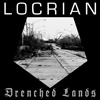 Almost disturbingly prolific, this is the latest (though that might change by the time you read this) disc from this noise/drone/metal duo. While they have been cranking the releases out in their relatively short career, they have at least been consistent with the quality of their releases, and Drenched Lands, for all its metal look and presentation, is one of the more subtle releases I have yet to hear.
Almost disturbingly prolific, this is the latest (though that might change by the time you read this) disc from this noise/drone/metal duo. While they have been cranking the releases out in their relatively short career, they have at least been consistent with the quality of their releases, and Drenched Lands, for all its metal look and presentation, is one of the more subtle releases I have yet to hear.
At War With False Noise/Small Doses
The opening track, "Obsolete Elegy in Effluvia and Dross," sounds like it could be some black metal track, replete with battle axes, corpse paint, and scrawny Nordic men posing in the snow, but instead it starts with simple, clear guitar strumming that is allowed to breathe, with only a subtle underpinning of synth hums, which is a lot more pure and open than a lot of their backcatalogue.
This is pretty much the lightest moment here, the next one, "Ghost Repeater," leads off with a buzzing amplifier and subtle guitar scrapes. High frequency pings start to come in, giving a very rhythmic, but natural sense of minimalism. Towards the second half of its lengthy duration, an anemic guitar squall comes in to push the treble levels even higher. Unfortunately the mix mostly neglects the lower end of the sonic spectrum, and would benefit more from a bit of bass added.
The brittle mix continues into "Barren Temple Obscured By Contaminated Fogs," but is more of an asset. The bits of clear guitar and digital organ sound better skewed this way, and the screamed metal vocals and white noise sound a bit more like a lo-fi Sunn O))), but more experimental and less metal. This contrasts the more bassy "Epicedium" that showcases guitar and some ambient tones, a more open work that, once the taut guitar playing kicks in towards the second half, has the structure and tension of a great film soundtrack.
"Obsolete Elegy in Cast Concrete" brings back the pained vocals that do sound very black metal, but are contrasted with the distant electronic bells and more airy synths, where even the chugging metal riffs keep it away from boring and clichéd metal territory. The disc ends with the 30-plus minute "Greyfield Shrines," which is the same live recording I reviewed in its original LP form. While it loses some of its charm as a bonus track rather than a heavy slab of vinyl, it still is a strong and well composed piece of live material.
I must say I’m a bit nervous since each release I’ve heard from this project is managing to be somewhat different, yet still consistent with the overall vibe of the band, and have not lost any bit of quality. Any time I see this frequency of music being released, I anticipate boredom to set in, but it has yet to happen with Locrian.
samples:
- Obsolete Elegy in Effluvia and Dross
- Barren Temple Obscured by Contaminated Fogs
- Obsolete Elegy in Cast Concrete
Read More
- Administrator
- Albums and Singles
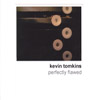 Kevin Tomkins is probably always going to be known for his tenure in the early (and some would say best) incarnation of Whitehouse, closely followed by his power electronics project Sutcliffe Jugend and the rock-oriented Bodychoke. This first solo outing from him completely defies expectations, being based only on sounds generated by an autoharp.
Kevin Tomkins is probably always going to be known for his tenure in the early (and some would say best) incarnation of Whitehouse, closely followed by his power electronics project Sutcliffe Jugend and the rock-oriented Bodychoke. This first solo outing from him completely defies expectations, being based only on sounds generated by an autoharp.
For such a simple concept, the tracks rarely resemble each other and are based less on the "playing" of the instrument and much more on using every facet of it as a means of generating sound and textures. Only on "Fifth Flaw" and the closing "Twelfth Flaw" is traditional playing the focus, and even within those there is a fair share of abstract clatters and vibrations, the latter being front-loaded with a dense set of sounds, but closing into pure and beautiful tones. "Eighth Flaw" takes the strums and instead messes with the tunings, allowing the loosened strings to rattle and create their own sense of percussion.
The percussive applications of the autoharp are spread throughout the album, sometimes being untreated, but consisting of what must be items bounced on the strings, such as the opening "First Flaw," which adds in extremely quiet swelling tones to balance out. "Ninth Flaw" marries the percussive treatment of the instrument with some Eastern-like string plucks. It is a continuous, collage-like piece that is almost too abstract for its own good, never really locking in to a specific sense of structure or cohesion. The too short "Fourth Flaw" is perhaps the only track where editing and sequencing seems to be a dominant theme, cutting the sounds of plucks and vibrations into a tightly mixed piece that resembles what would be labeled electronica if it was coming out of a laptop or sampler.
The longer "Sixth Flaw" is perhaps the best piece here, and is nicely sequenced right in the center of the album. The layers of autoharp are shaped into insect chatters, tribal percussion elements, and an array of disorienting tones that would make the perfect soundtrack to going up a river into a dark jungle. The following "Seventh Flaw" continues the jungle motif, autoharp being used as a gamelan, and occasionally l ike a fiddle, possibly moving the river metaphor from before out of Africa or Asia and into some of the less settled parts of the American South.
For an album that is focused solely on the use of one instrument, Tomkins has used what sounds more like old fashion experimentation more than technological processing, yet for the most part channels the creaks, groans, and vibrations of an autoharp into diverse and varied compositions. While it lacks the brutality and aggression of his other projects, it retains the structure and composition that set Sutcliffe Jugend apart from many similar noise bands.
samples
Read More
- Administrator
- Albums and Singles
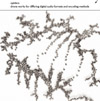 Presenting a whopping 24 tracks in just over 45 minutes, this album is exactly what it says it is: a series of drone works the titles of which indicate the digital works' file type, size, bitrate and other pieces of information. If this sounds like a disjointed mess however—and you couldn't be blamed if the quantity and brevity of the material suggested as much—don't be fooled. This is an extended work whose whole is simply attained through the slight differences afforded by so many partitions.
Presenting a whopping 24 tracks in just over 45 minutes, this album is exactly what it says it is: a series of drone works the titles of which indicate the digital works' file type, size, bitrate and other pieces of information. If this sounds like a disjointed mess however—and you couldn't be blamed if the quantity and brevity of the material suggested as much—don't be fooled. This is an extended work whose whole is simply attained through the slight differences afforded by so many partitions.
If anything, the suggested chaos of the number of tracks is quelled by Ophibre's distinctly placid sound. The moniker of Benjamin Rossignol, the project represents a study in the subtlest shifting of sound planes. Where much contemporary drone busies itself with overdone dramatics, Rossignol's works often end as they begin as he starts with a set number of sounds and allows them to interact as they will.
In this context, the results far outweigh the specific differences indicated by the track titles. With every track here lasting at or just under two minutes, it seems as though the work was first conceived of as a whole and then, perhaps, broken down and reformatted. While the differences between them seem negligible at first, they do have a way of causing just enough change so as to give the still nature of the work some shape. Thus the work evolves as more of an experiment than a statement, keeping the outcome unforeseen and subtly mobile as the third through sixth tracks drop their sample rates from 128 KBPS gradually down to 32 KBPS. The entire texture changes with it.
The step-wise subtlety of the changes here go hand in hand with the number of tracks then, as each section flows into the next and pushes it along with patient shifts of detail. This approach is markedly more thoughtful and, dare I say, academic than a lot of this type of work, yet it reveals little of the sterility that such approaches often yield. Instead the process behind the work, however intriguing it may be, takes a back seat to the inescapable beauty of the piece itself. Starting as a nearly ambient work, the whole thing slowly dissolves and restructures itself again and again as it goes through its variations, allowing differing portions to themselves as the work progresses.
Essentially what results is a nearly ambient piece, but one whose varying degrees of sample quality create grit that maintain the continuity of the whole through the common source material. When the last track arrives, it is the same exact format of the first one, and its high bitrate and clarity round off a disc whose travels are deeply inward. It is a direction drone could look more often.
samples:
- .aiff, 20.3 MB, 44100 Hz, 16 bit, PCM, 1411 KBPS
- .wav, 0.14 MB, 6000 Hz, GSM, 9 KBPS
- .raw, 1.3 MB, 8000 Hz, 8 bit, G711 alaw, 13 KBPS
Read More
- Administrator
- Albums and Singles
 An hour of mostly solo cornet played in a French monastery might seem a strict challenge. And that's the point here as Rob Mazurek battles his more extreme urges on 11 compositions recorded at Fontevraud l'Abbaye and dedicated to the controversial Robert D'Arbrissel who founded it in 1099.
An hour of mostly solo cornet played in a French monastery might seem a strict challenge. And that's the point here as Rob Mazurek battles his more extreme urges on 11 compositions recorded at Fontevraud l'Abbaye and dedicated to the controversial Robert D'Arbrissel who founded it in 1099.
Rob Mazurek is director of Exploding Star Orchestra, leader of Isotope 217 and various aggregations of the Chicago Underground jazz group, and has worked with Tortoise, Brokeback, Stereolab, and Gastr del Sol. In 2005, Mazurek was granted an artist residency at Fontevraud. He produced paintings from watercolors and local wine, videos, writing, piano compositions, and (on May 27 & 28, 2005) this recording.
Abstractions comes with a fine booklet including photgraphs of the recording sessions. They give an idea of the incredible acoustic environment in which Mazurek was working. Apparently, he spent time playing all over the abbey in the late evenings until late at night benefitting from the amazing sound qualities. One photograph of him standing way off in the distance in the enormous abbatiale is especially evocative. Annoyingly, though, the packaging is a rectangular shape and has no reference to artist:album title on the spine. I suppose it looks tasteful but storing and finding it could be rather annoying.
The impact of the first notes is stunning, but none of the entire hour of recording disappoints. The cornet is given time and space to articulate Mazurek's notions and feelings about the history and atmosphere of the location; and yet the introduction of other sounds provids timely contrast and support. I particularly like the warmth generated by the piano at the beginning of "The Torso" but even the birdsong on "Meditation and Skyward Motion" works. Tracks are titled to focus on the parts of the body as separate from each other, and in consideration of flesh, the physical, and the spirit.
Robert D'Arbrissal was known for his extreme asceticism. He supported Gregorian clerical reform and was first a destitute hermit and then a wandering, barefoot, hair-shirt wearing preacher. According to Grover A. Zinn in Medieval France, in both of these guises Arbrissal attracted many followers, especially women. His popularity and his single-mindedness led to the founding of an abbey at Fontevraud, near the Loire river in the diocese of Poitiers. The site had separate buildings for monks and nuns. Accusations were rife that Abrbrissels took in protitutes and that the nuns shared Arbrissel's bed as well as the church. However, evidence suggests that it was fear of the practice of syneisaktism (or subintroducta), which was at the root of the criticism. This spiritual marriage of people of the opposite sex, two spiritual souls who avoid sexual relations, tested the notion of gender and challenged the notion of male superiority.
When Mazurek asks a brief question at one point on the album, rather than shattering any spell, this serves as a link to (or reminder of) the present. Similarly, the final piece "Sound and Silence" starts briskly but is then silent for five minutes until we hear people walking and talking in the abbey amidst the faint echoes of music and whatever residue of other past sounds still remains at Fontevraud.
samples:
Read More
- Administrator
- Albums and Singles
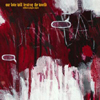 Campbell Kneale may longer be known as Birchville Cat Motel, but he certainly has not stopped making abrasive, nightmarish music. Surprisingly, curating a Prince tribute album (Shutupalreadydamn!) has failed to translate into a funkier, sexier Neale. Stillborn Plague Angels is exactly the sort of album that Satan would make if he had the time and inclination to start a noise band.
Campbell Kneale may longer be known as Birchville Cat Motel, but he certainly has not stopped making abrasive, nightmarish music. Surprisingly, curating a Prince tribute album (Shutupalreadydamn!) has failed to translate into a funkier, sexier Neale. Stillborn Plague Angels is exactly the sort of album that Satan would make if he had the time and inclination to start a noise band.
Campbell Kneale has made many unusual changes in his artistic life over the last few years. Most notably, he ended both the influential and beloved (in certain circles) Birchville Cat Motel (largely due to frustration with fan expectations), and his record label, Celebrate Psi Phenomenon (allegedly torching all unsold stock in a bonfire). Additionally, he formed a doom metal band called Black Boned Angel, started the Our Love Will Destroy The World project, and developed some serious animosity towards digital media ("Nobody's going to love a puny uploaded file...they might like it, or maybe find it interesting, or be able to list it on their 'what I’m listening to now' blog. But they wont be able to LOVE it. These people are cursed."). In keeping with this newfound media idealism, Stillborn Plague Angels is only available on vinyl.
The title track kicks the album off on an appropriately ugly and unsettling note, as a distorted throb lays the foundation for a menacing, metallic shimmer. Gradually, layers and layers of dissonant and unsettling synths and guitar noises are built up until the song culminates in a bizarrely effective atonal lead guitar part that would make Jandek smile. Amusingly, this teeth-rattling discordance is among the more melodic and conventionally musical moments on the album, as there are at least actual, clearly defined, notes being played.
The following two tracks can best be described as grotesque and corrupt hellscapes. They are both painful, uncompromising, and very difficult to listen to. I find that "Pink Hollow Paradise" is more of squirming, chattering, strangled miasma of shrill queasiness while "Chinese Emperors" leans more towards being a wavering, slow motion, anguished howl. I don't know if I will ever listen to these tracks again, but they are both resoundingly successful in creating a palpable sense of abject horror.
After some disquieting shimmering drone, "Chinese Emperors" erupts into the mournful guitar squall of "Over Prehistoric Texas" (although it might just be one long track entitled "Chinese Emperors and The Army of Eternity Over Prehistoric Texas" - the Dekorder website seems to think they are separate and I feel ill-equipped to win an argument with them over it, so i will assume that two separate tracks segue). While "Texas" is undeniably more melodic than the previous three tracks, it seems a bit anticlimactic and uninspired after the previous visceral abominations.
Naturally, music this unrepentantly harsh will appeal to very few people, but Stillborn Plague Angels is a complete success artistically. Terms like "good," "bad," and "listenable" seem irrelevant in the face of such elephantine and single-minded ugliness. Dekorder quite aptly describes this album as "endless roaring catastrophe" and I have absolutely no qualifications to add to that. If such a thing sounds at all appealing, Campbell Kneale is someone to watch closely (albeit without hassling him about unmet expectations).
Samples:
Read More

